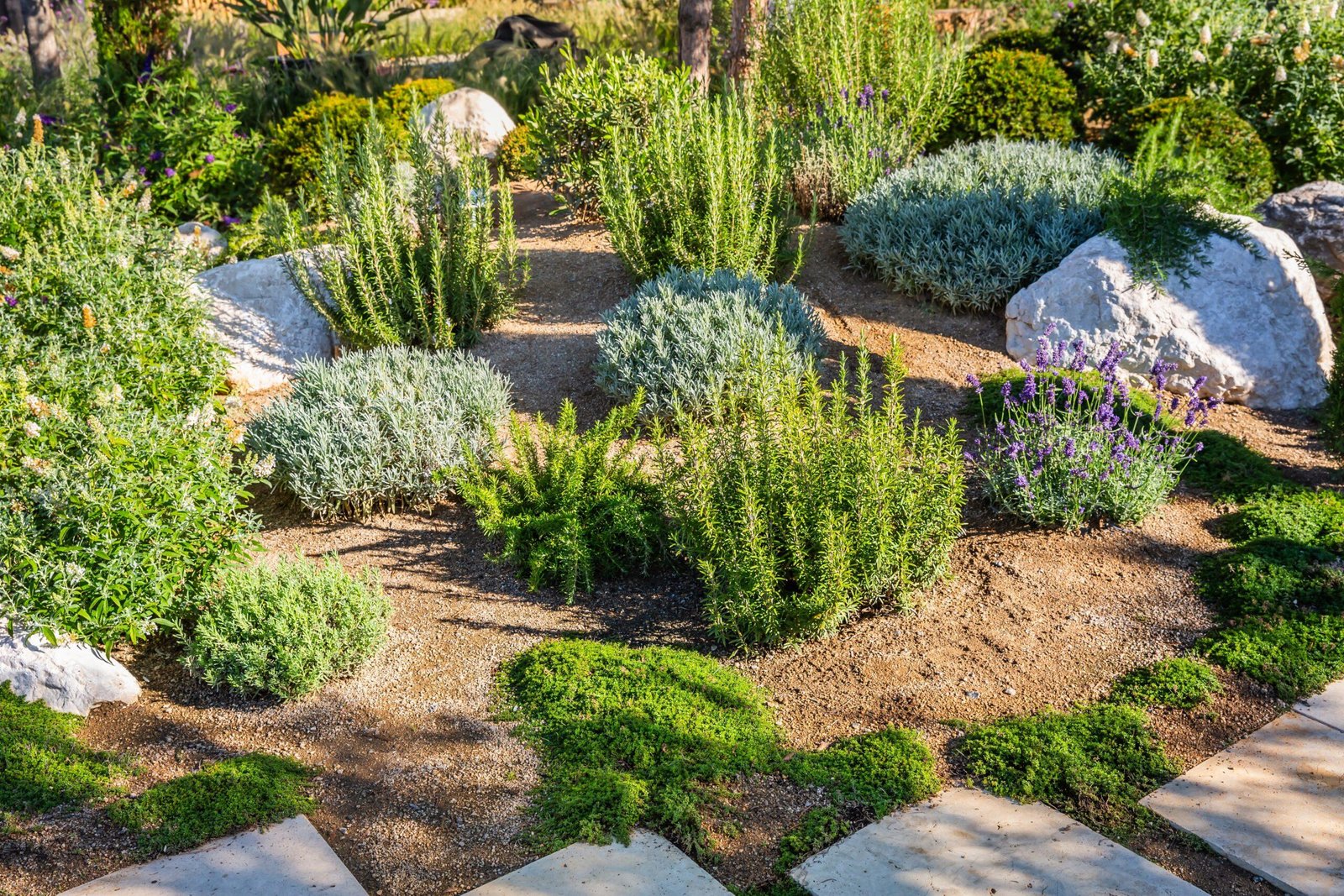Seasonal Landscaping Tips for Sacramento Homeowners

Living in Sacramento offers the unique opportunity to enjoy gardening and landscaping throughout the year. With its Mediterranean climate, characterized by cool, wet winters and hot, dry summers, Sacramento homeowners need tailored landscaping tips to make the most of each season. This guide provides practical advice, tips, and examples to help you keep your yard looking its best, no matter the time of year.
By following these seasonal landscaping tips, you can create a vibrant and thriving outdoor space that enhances your home’s curb appeal and provides a haven for relaxation and enjoyment. Whether you’re an experienced gardener or a novice, this guide will equip you with the knowledge to maintain a beautiful yard all year round.
Fall Landscaping Prep
Clean Up and Mulch
Fall is the perfect time to clean up your garden and prepare it for the colder months ahead. Begin by removing fallen leaves, dead branches, and any debris that could harbor pests over the winter.
Next, apply a layer of mulch to your garden beds. Mulching helps retain soil moisture, suppress weeds, and protect plant roots from temperature fluctuations. Use organic mulch, such as wood chips or compost, which will break down over time and enrich the soil.
Planting for Spring Blooms
Fall is an excellent time to plant bulbs that will bloom in the spring. Consider planting daffodils, tulips, and crocuses. These bulbs require a cold period to develop properly, making fall the ideal planting season.
Additionally, fall is a great time to plant perennials and shrubs. The cooler temperatures and increased rainfall help new plants establish strong root systems before the heat of summer returns.
Lawn Care
To ensure a lush and healthy lawn in the spring, fall is the time to focus on lawn care. Start by aerating your lawn to alleviate soil compaction and improve water infiltration. Follow up with overseeding to fill in bare spots and promote thick, green growth.
Apply a slow-release fertilizer to provide essential nutrients that will support root development over the winter. Finally, keep your lawn mowed to a height of about 2.5 to 3 inches to prevent disease and improve air circulation.
Winter Watering Wisdom
Adjusting Irrigation
During the winter months, Sacramento typically receives more rainfall, reducing the need for supplemental irrigation. However, it’s essential to monitor soil moisture and adjust your irrigation system accordingly.
Ensure your irrigation system is set to water deeply and infrequently, allowing the soil to dry out between watering sessions. This practice encourages deep root growth and prevents waterlogging, which can lead to root rot.
Protecting Sensitive Plants
Some plants may be more vulnerable to cold temperatures and frost. Protect sensitive plants by covering them with frost cloths or blankets during particularly cold nights.
For potted plants, consider moving them to a sheltered area, such as a covered patio or garage, to protect them from freezing temperatures. Alternatively, wrap pots in burlap or bubble wrap to insulate the roots.
Pruning Trees and Shrubs
Winter is an excellent time for pruning deciduous trees and shrubs. With the leaves gone, it’s easier to see the structure of the plant and make precise cuts.
Remove any dead, diseased, or damaged branches to promote healthy growth in the spring. Additionally, thinning out dense canopies improves air circulation and reduces the risk of disease.
Spring Growth Strategies
Soil Preparation
Spring is the time to prepare your garden beds for planting. Start by testing your soil to determine its pH and nutrient levels. Amend the soil with compost or other organic matter to improve its structure and fertility.
Consider adding a balanced fertilizer to provide essential nutrients for plant growth. Work the amendments into the soil to a depth of about 6 inches to ensure even distribution.
Planting Annuals and Vegetables
Spring is the ideal time to plant annual flowers and vegetables. Choose a variety of colorful annuals, such as petunias, marigolds, and zinnias, to brighten your garden beds and containers.
For your vegetable garden, consider planting cool-season crops, such as lettuce, spinach, and peas, early in the season. As the weather warms, transition to warm-season crops, like tomatoes, peppers, and cucumbers.
Pest and Disease Management
Spring is also the time to stay vigilant about pest and disease management. Regularly inspect your plants for signs of pests, such as aphids, caterpillars, and snails.
If you spot any issues, consider using organic pest control methods, such as insecticidal soap or neem oil. Additionally, practice good garden hygiene by removing any infected plant material and disposing of it properly.
Summer Survival Tips
Efficient Watering
With Sacramento’s hot, dry summers, efficient watering is crucial to keep your garden thriving. Water your plants early in the morning or late in the evening to minimize evaporation and maximize absorption.
Use drip irrigation or soaker hoses to deliver water directly to the root zone, reducing water waste and promoting deep root growth. Consider using a rain gauge to monitor rainfall and adjust your irrigation schedule accordingly.
Mulching and Shade
Mulching is especially important during the summer months to help retain soil moisture and keep roots cool. Apply a thick layer of mulch around your plants, being careful not to pile it against the stems.
Consider providing shade for heat-sensitive plants, such as ferns and hostas, by using shade cloths or strategically placing taller plants to cast shadows. This practice can help prevent sunburn and reduce water stress.
Lawn Maintenance
Summer is the time to keep your lawn healthy and green. Raise your mower blade to a height of about 3 to 4 inches to encourage deep root growth and reduce water evaporation.
Water your lawn deeply and infrequently, aiming for about 1 to 1.5 inches of water per week. Consider using a sprinkler timer to ensure even coverage and avoid overwatering.
Year-Round Landscaping Tips
Choosing Drought-Tolerant Plants
Sacramento’s climate makes drought-tolerant plants an excellent choice for year-round landscaping. Consider incorporating native plants, such as California poppies, manzanita, and ceanothus, into your garden.
These plants are adapted to the local climate and require less water and maintenance than non-native species. Additionally, they provide habitat and food for local wildlife, promoting biodiversity.
Creating a Wildlife-Friendly Garden
Attracting beneficial wildlife to your garden can help with pest control and pollination. Consider planting a variety of flowers that bloom at different times of the year to provide a continuous food source for pollinators, such as bees and butterflies.
Include features like birdbaths, bird feeders, and nesting boxes to attract birds, which can help control insect populations. Providing shelter, such as dense shrubs or rock piles, can also encourage beneficial insects and small animals to take up residence in your garden.
Sustainable Landscaping Practices
Adopting sustainable landscaping practices can help you create an eco-friendly garden that conserves resources and reduces waste. Consider using organic fertilizers and pest control methods to minimize the impact on the environment.
Collect and use rainwater for irrigation by installing rain barrels or a rain garden. Additionally, composting kitchen scraps and garden waste can reduce landfill waste and provide valuable nutrients for your soil.
Landscaping Year-Round
By following these seasonal landscaping tips, Sacramento homeowners can create and maintain a beautiful, thriving garden all year round. Each season presents unique opportunities and challenges, but with the right knowledge and preparation, you can enjoy a stunning outdoor space that enhances your home’s curb appeal and provides a sanctuary for relaxation.
Remember, the key to successful landscaping is continuous learning and adaptation. Stay curious, experiment with new plants and techniques, and don’t be afraid to seek help from local gardening experts and community resources.
For personalized advice and expert guidance, consider booking a consultation with one of our professional landscapers. They’ll help you refine your garden design, choose the best plants for your climate, and implement sustainable practices that will benefit your garden for years to come.
